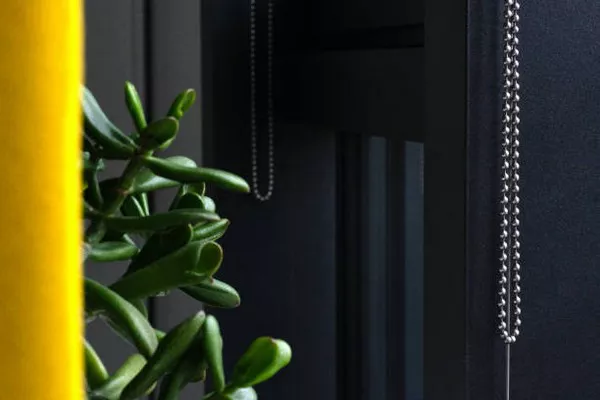Jade plants (Crassula ovata), also known as the money plant or lucky plant, have become a popular choice among both novice and experienced gardeners. These charming succulents are not only aesthetically pleasing but also relatively low-maintenance, making them an ideal addition to your indoor or outdoor garden. Whether you’re a seasoned gardener looking for a new addition or a beginner seeking a resilient and beautiful plant to nurture, this comprehensive guide will help you unlock the secrets to successfully growing and caring for jade plants.
Choosing the Right Jade Plant
Before diving into the specifics of jade plant care, it’s essential to choose the right plant. When selecting a jade plant, look for the following characteristics:
Size: Jade plants come in various sizes, from small potted plants to large shrubs. Choose one that suits your available space.
Healthy Appearance: Inspect the plant for any signs of damage, disease, or pests. A healthy jade plant will have firm, fleshy leaves and no brown spots or withering.
Root System: If possible, check the root system. A healthy root system is essential for a thriving plant. Avoid plants with root rot or excessively tangled roots.
Container: If you’re purchasing a potted jade plant, ensure the pot has good drainage. Adequate drainage prevents waterlogging, a common issue with succulents.
Planting and Potting Jade Plants
Once you’ve chosen the perfect jade plant, it’s time to consider its ideal growing conditions and environment.
1. Pot Selection: If you’re planting your jade in a container, opt for a well-draining pot with drainage holes. Terra cotta pots are an excellent choice as they allow excess moisture to evaporate.
2. Soil: Jade plants thrive in well-draining soil. Use a succulent or cactus potting mix or create your own by mixing regular potting soil with perlite or sand to enhance drainage.
3. Planting Depth: Plant your jade at the same depth it was in its nursery container. Ensure the soil level is below the pot’s rim to prevent water from spilling over when you water the plant.
4. Sunlight: Jade plants are native to South Africa and require plenty of sunlight. Place your plant in a spot with bright, indirect sunlight. A few hours of direct morning sun can also be beneficial.
5. Temperature: Jade plants prefer temperatures between 65°F to 75°F (18°C to 24°C) during the day and slightly cooler temperatures at night. Protect them from frost and extreme cold.
Watering and Moisture Control
Jade plants are known for their drought tolerance, so proper watering is crucial to their well-being. Follow these guidelines to keep your jade plant properly hydrated:
1. Allow Soil to Dry: Water your jade plant thoroughly but allow the soil to dry out completely between waterings. Stick your finger into the soil about an inch deep; if it feels dry, it’s time to water.
2. Watering Frequency: In general, water your jade plant every 2-4 weeks, depending on environmental conditions. Reduce watering in winter when the plant’s growth slows down.
3. Watering Technique: Water the soil, not the leaves, as wet foliage can lead to fungal issues. Water until you see excess water draining from the pot’s bottom, ensuring proper drainage.
4. Avoid Overwatering: Overwatering is a common mistake with jade plants. Signs of overwatering include yellowing leaves, mushy stems, or rotting roots. Adjust your watering frequency accordingly.
Fertilizing Jade Plants
Proper fertilization is essential to encourage healthy growth in jade plants. Follow these tips for successful fertilization:
1. Fertilize Sparingly: Jade plants are not heavy feeders. Fertilize them sparingly, typically in the spring and summer months. Use a balanced, diluted liquid fertilizer, or a specialized succulent fertilizer, and follow the label instructions.
2. Avoid Over-Fertilizing: Over-fertilizing can lead to excessive growth, which may make your jade plant leggy and less sturdy. Always err on the side of under-fertilizing rather than overdoing it.
3. Fertilize Young Plants Differently: Young jade plants benefit from a slightly higher nitrogen content in their fertilizer to promote initial growth. As they mature, switch to a balanced fertilizer.
Pruning and Propagation
Pruning is not a frequent task with jade plants, but it can help maintain their shape and appearance. Follow these guidelines:
1. Pruning Leggy Growth: If your jade plant becomes leggy or top-heavy, prune the stems back to encourage a more compact, bushy appearance.
2. Propagation: Jade plants are easily propagated from stem or leaf cuttings. Allow cuttings to dry and callus for a few days before planting them in well-draining soil. Keep the soil lightly moist until new growth appears.
Common Issues and Solutions
Even with the best care, jade plants can encounter some common issues:
1. Pest Infestations: Keep an eye out for common succulent pests like mealybugs and spider mites. Treat infestations promptly with insecticidal soap or neem oil.
2. Yellowing Leaves: Yellowing leaves may indicate overwatering or poor drainage. Adjust your watering habits and ensure your pot has good drainage.
3. Soft, Wrinkled Leaves: Soft or wrinkled leaves may be a sign of underwatering. Give your jade plant a good soak and adjust your watering schedule.
Conclusion
Growing jade plants can be a rewarding and enjoyable experience for gardeners of all skill levels. With the right care and attention to their specific needs, these beautiful succulents can thrive indoors or outdoors, adding a touch of natural elegance to any space. Remember to choose a healthy plant, provide proper soil and sunlight, and practice mindful watering and fertilizing. By following these guidelines, you’ll be well on your way to growing a vibrant and resilient jade plant that will bring you joy for years to come.


